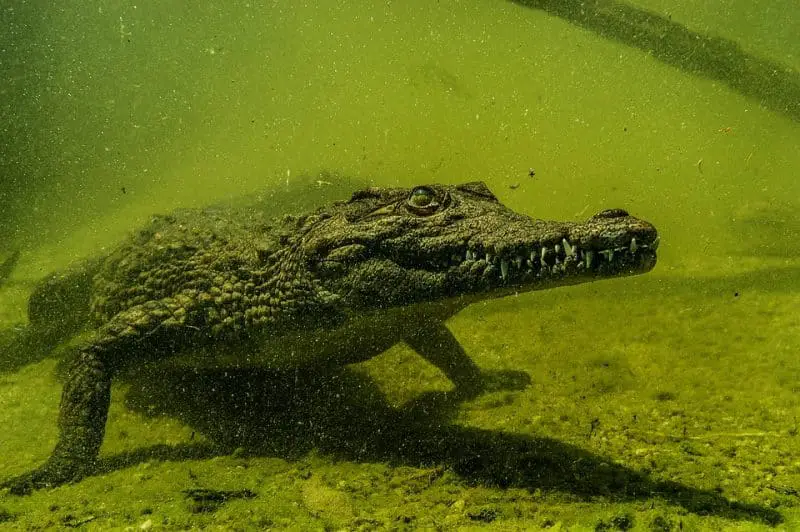Do you want to know where to see crocodiles in the wild?
Not to be confused with its distant coursin the alligator, Crocodiles are large semiaquatic reptiles that live throughout the tropics in Africa, Asia, the Americas and Australia.
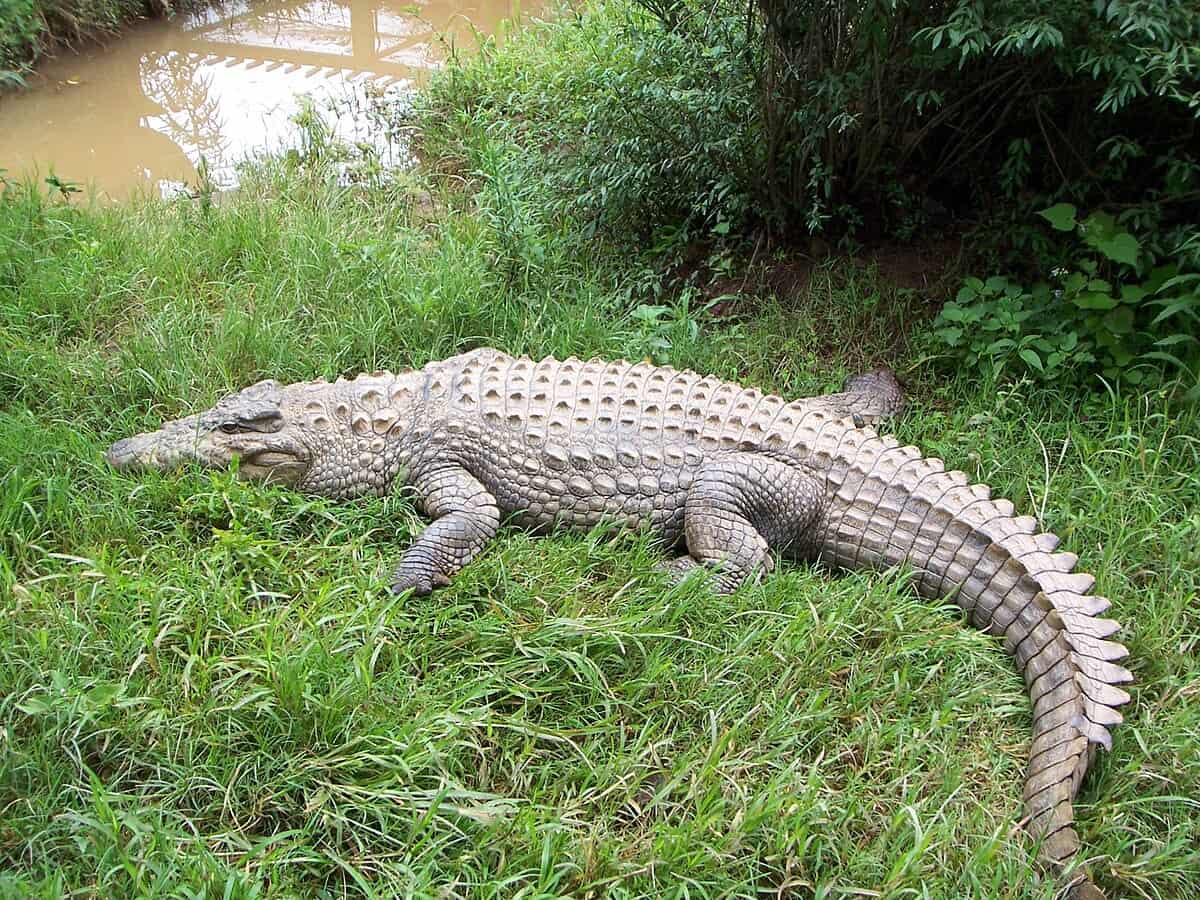
Crocodiles are a living link with the dinosaur-like reptiles of prehistoric times and are the nearest living relatives of the birds. A large variety of crocodilian fossils have been discovered that date back 200 million years to the Late Triassic Epoch.
Intrigued? Stay tuned for facts about these prehistoric reptilian predators and the best places to encounter them around the world. Read on or jump to a headline of your interest…
Key Points
| Aspect | Details |
|---|---|
| Crocodile Distribution & Habitat | Large semiaquatic reptiles found in Africa, Asia, the Americas, and Australia. Inhabit swamps, lakes, rivers, and coastal areas, including freshwater, brackish, and saltwater environments. |
| Types of Crocodiles | 13 species with varying sizes and habitat preferences. Smallest: Dwarf Crocodile. Largest: Saltwater Crocodile. |
| Commonly Encountered Crocodile Species | Saltwater Crocodile, American Crocodile, Marsh/Mugger Crocodile, Nile Crocodile, Dwarf Crocodile, Freshwater Crocodile, Cuban Crocodile, West African Slender-Snouted Crocodile. |
| Behavior & Diet | Carnivorous ambush predators with excellent senses. Opportunistic hunters, preying on fish, birds, mammals, and other animals. |
| Conservation Status | Several species listed as vulnerable, endangered, or critically endangered due to habitat loss, overhunting, and human-wildlife conflicts. |
| Crocodile Speed & Lifespan | Fast swimmers, reaching speeds up to 35 kilometers per hour. Can live up to 70 years in captivity. |
| Difference Between Crocodiles & Alligators | Crocodiles have a V-shaped snout, while alligators have a U-shaped snout. Crocodiles are generally more aggressive than alligators. |
| Safety | Larger species (e.g., Saltwater Crocodile, Nile Crocodile) can be dangerous to humans. Caution should be exercised near crocodile habitats. |
| Best Places to See Crocodiles | Everglades National Park (Florida, USA), Kruger National Park (South Africa), Kakadu National Park (Australia), and more national parks and reserves around the world offer opportunities to see crocodiles in their natural habitats. |
| Conservation Efforts | Sustainable harvesting and conservation efforts play a vital role in protecting crocodile populations that have declined due to habitat destruction and overhunting for their valuable skins. |
| Interesting Facts | Ancient creatures, existing for over 200 million years. Evolved to become successful predators with acute senses. Known for their ability to produce tears. |
| Crocodile Communication & Intelligence | Communicate through vocalizations and show evidence of rapid learning. Can recognize their keepers in captivity. |
| Crocodile Sightings | Specialized tour operators offer safe and educational crocodile tours in various countries like Australia, South Africa, Cuba, Sri Lanka, India, and more. |
Types Of Crocodiles
Crocodiles come in 13 distinct species, exhibiting considerable variation in their sizes. The smallest type is the dwarf crocodile, measuring about 5.6 feet (1.7 meters) long and weighing between 13 to 15 pounds (6 to 7 kilograms). Conversely, the largest species is the saltwater crocodile.
We have covered the most commonly encountered 8 types of crocodiles.
Salt water Crocodile
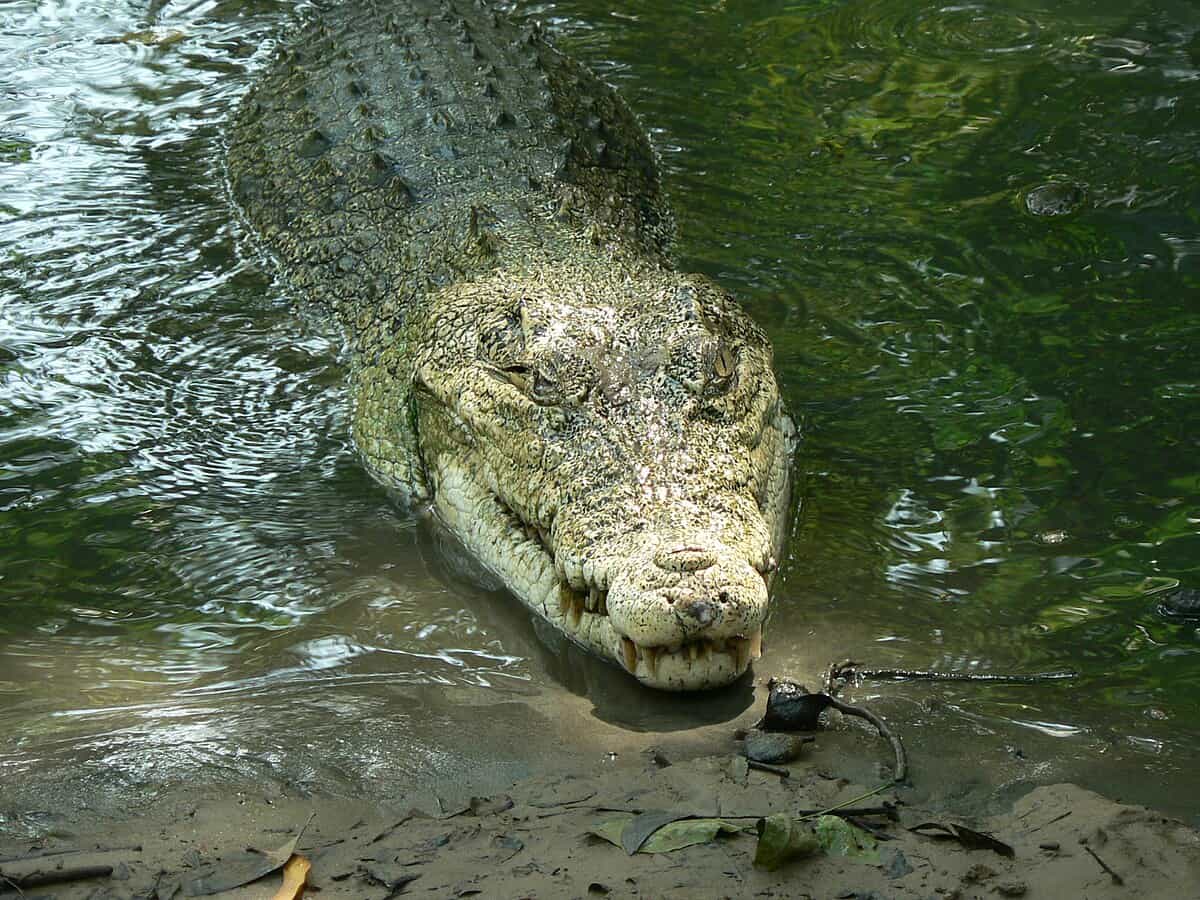
| Aspect | Information |
|---|---|
| Scientific Name | Crocodylus porosus |
| Length | Males: Up to 17 feet (5.2 meters) |
| Females: Up to 12 feet (3.7 meters) | |
| Weight | Males: 1,000 to 2,200 pounds (450 to 1,000 kg) |
| Females: 500 to 1,100 pounds (225 to 500 kg) | |
| Habitat | Brackish and saltwater environments, including estuaries, mangrove swamps, coastal rivers, and lagoons. Can also venture into the open sea. |
| Diet | Carnivorous, preying on a variety of animals, including fish, birds, turtles, crabs, and larger mammals like water buffalo and deer. Capable of taking large prey, sometimes even other crocodiles. |
| Behavior | Apex predator, known for its aggressiveness and territorial nature. Excellent swimmers and powerful ambush predators. |
| Range | Found in the coastal regions of the Indian subcontinent, Southeast Asia, and Northern Australia. Extends from eastern India to northern Australia and some Pacific islands. |
| Conservation Status | Least Concern (IUCN Red List) |
have an enormous range, populating the brackish and freshwater regions of eastern India, Southeast Asia, and northern Australia. They are excellent swimmers and have often been spotted far out at sea.
The largest crocodile is the Saltwater Crocodile, which can grow up to 23.0 ft (7.0 m) in length, weighing 2,200 – 2,600 lb (1,000 to 1,200 kg, or 150 to 190 stone).
American Crocodile
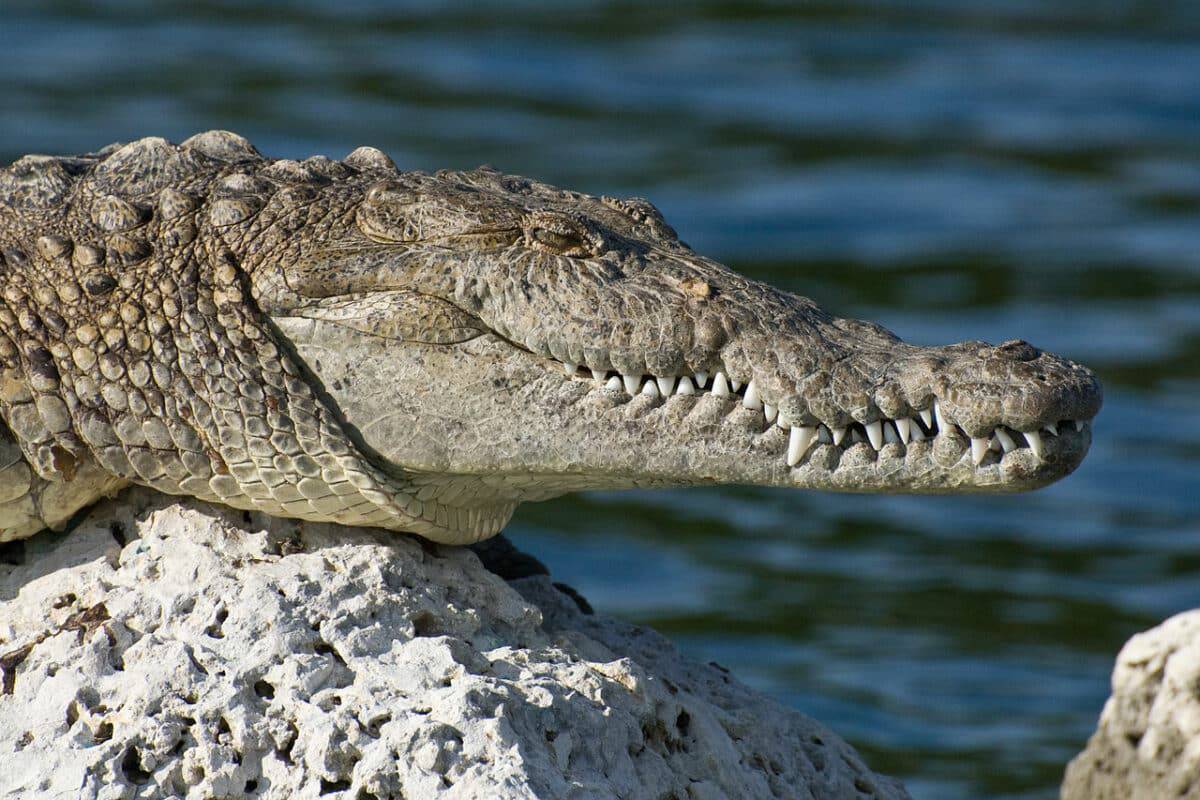
| Aspect | Information |
|---|---|
| Scientific Name | Crocodylus acutus |
| Length | Males: Up to 13 to 16 feet (4 to 5 meters) |
| Females: Up to 9 to 12 feet (2.7 to 3.7 meters) | |
| Weight | Males: 500 to 1,000 pounds (225 to 450 kg) |
| Females: 200 to 300 pounds (90 to 136 kg) | |
| Habitat | Brackish and saltwater habitats, including coastal lagoons, estuaries, and mangrove swamps. Occurs in both marine and freshwater environments. |
| Diet | Carnivorous, feeding on fish, crustaceans, birds, mammals, and occasionally larger prey such as deer and wild pigs. |
| Behavior | Less aggressive than some other crocodile species, but can still be dangerous and defensive when threatened. They are more tolerant of cooler temperatures compared to other crocodiles. |
| Range | Found in the southeastern United States, throughout the Caribbean islands, and along the coasts of Central and South America. |
| Conservation Status | Vulnerable (IUCN Red List) |
It is the most widespread of the four extant species of crocodiles from the Americas, with populations present from South Florida and the coasts of Mexico to as far south as Peru and Venezuela.
Marsh/ Mugger Crocodile
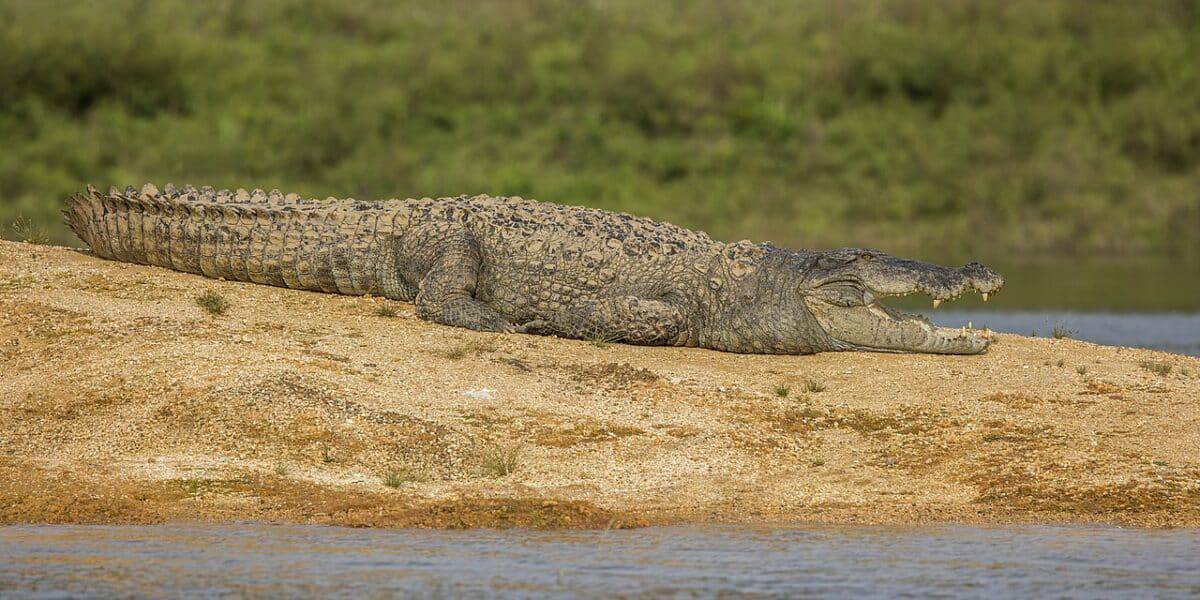
| Aspect | Information |
|---|---|
| Scientific Name | Crocodylus palustris |
| Length | Males: Up to 13 to 16 feet (4 to 5 meters) |
| Females: Up to 10 to 13 feet (3 to 4 meters) | |
| Weight | Males: 500 to 1,000 pounds (225 to 450 kg) |
| Females: 200 to 300 pounds (90 to 136 kg) | |
| Habitat | Freshwater habitats, including marshes, swamps, lakes, and slow-moving rivers. Occurs in both freshwater and brackish water environments. |
| Diet | Carnivorous, preying on fish, crustaceans, birds, mammals, and other small to medium-sized animals. They are opportunistic feeders and can scavenge for food as well. |
| Behavior | Generally shy and less aggressive than some other crocodile species, but can still be dangerous when provoked. They are known for their basking behavior, often seen sunning themselves on the banks of water bodies. |
| Range | Found in parts of South Asia, including India, Sri Lanka, Pakistan, Nepal, and Bangladesh. |
| Conservation Status | Vulnerable (IUCN Red List) |
The mugger crocodile, also known as the marsh crocodile, inhabits freshwater regions from southern Iran to the Indian subcontinent.
Nile Crocodile
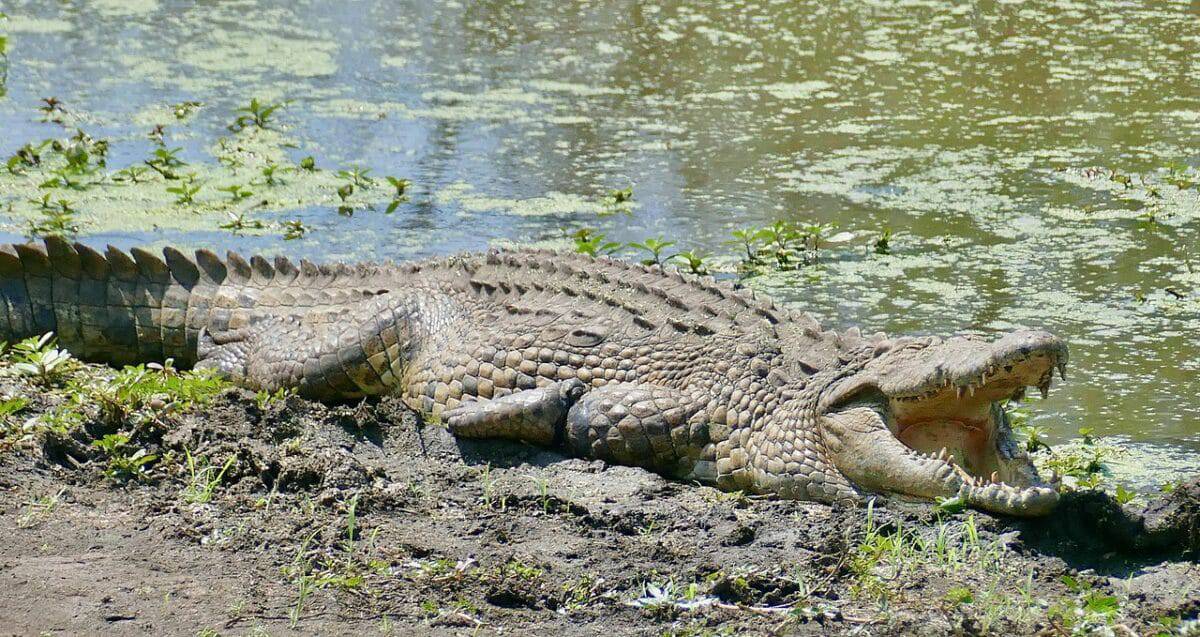
| Aspect | Information |
|---|---|
| Scientific Name | Crocodylus niloticus |
| Length | Males: Up to 16 to 20 feet (4.8 to 6 meters) |
| Females: Up to 10 to 13 feet (3 to 4 meters) | |
| Weight | Males: 500 to 1,650 pounds (227 to 750 kg) |
| Females: 200 to 700 pounds (90 to 318 kg) | |
| Habitat | Freshwater habitats, including rivers, lakes, marshes, and swamps. They are also found in coastal estuaries and brackish water environments. |
| Diet | Carnivorous, feeding on a wide variety of prey, including fish, birds, mammals, and occasionally larger animals such as buffalo and wildebeest. Known for their powerful ambush hunting technique. |
| Behavior | Aggressive and territorial, Nile crocodiles are known for their stealthy approach to hunting. They are capable of explosive bursts of speed to catch their prey. |
| Range | Found throughout much of sub-Saharan Africa, including countries such as Egypt, Sudan, Kenya, Tanzania, South Africa, and Madagascar. |
| Conservation Status | Least Concern (IUCN Red List) |
The Nile crocodile, native to freshwater habitats in Africa, is present in 26 countries. Due to its widespread occurrence and stable population trend, it has been listed as Least Concern on the IUCN Red List since 1996.
Dwarf Crocodile
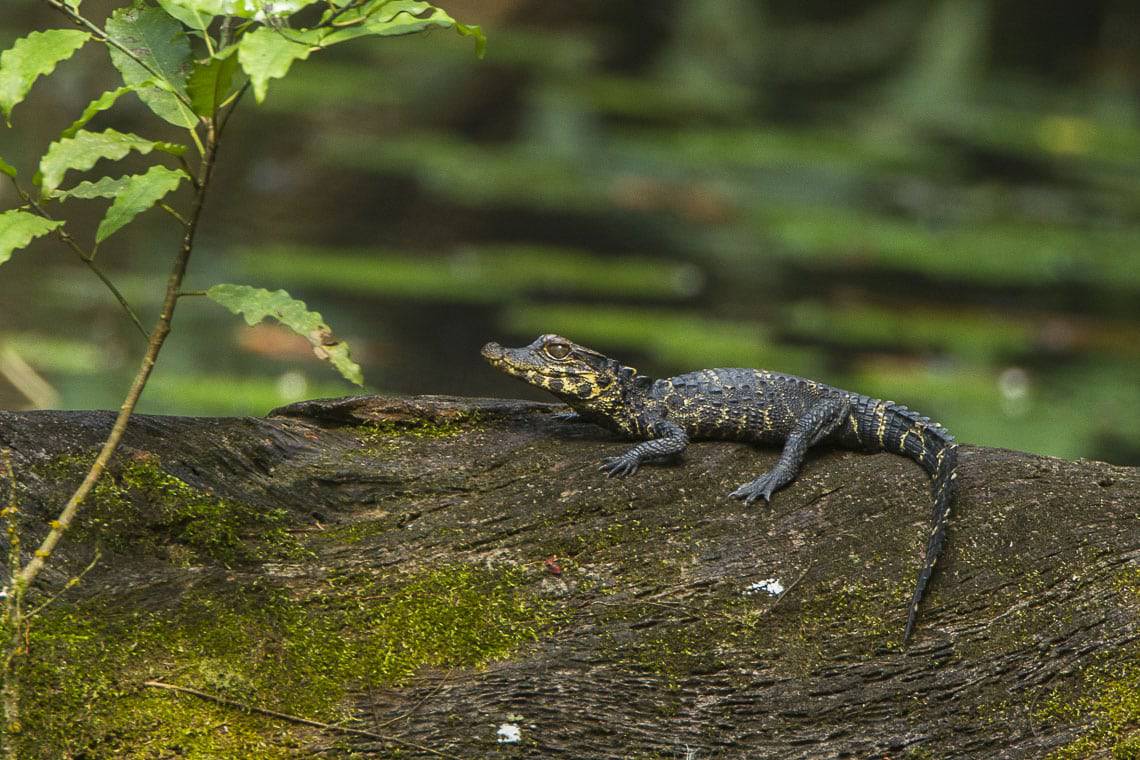
| Aspect | Information |
|---|---|
| Scientific Name | Osteolaemus tetraspis |
| Length | Males: Up to 5 to 6.2 feet (1.5 to 1.9 meters) |
| Females: Up to 4.9 feet (1.5 meters) | |
| Weight | Males: 40 to 70 pounds (18 to 32 kg) |
| Females: 30 to 40 pounds (14 to 18 kg) | |
| Habitat | Freshwater habitats, including slow-moving rivers, swamps, and marshes. They prefer forested areas and are often found near streams and water bodies in the rainforest. |
| Diet | Carnivorous, feeding on a variety of prey, including fish, crustaceans, insects, and small vertebrates. They are nocturnal hunters and use stealth to catch their prey. |
| Behavior | Shy and secretive, dwarf crocodiles are relatively docile compared to larger crocodile species. They are excellent climbers and can hide in vegetation to avoid detection. |
| Range | Found in Central and West Africa, including countries such as Nigeria, Cameroon, Equatorial Guinea, and Gabon. They have a limited distribution and are restricted to specific regions. |
| Conservation Status | Vulnerable (IUCN Red List) |
The dwarf crocodile, also known as the African dwarf crocodile, broad-snouted crocodile or bony crocodile, is an African crocodile that is also the smallest extant species of crocodile.+
You might also like: Komodo Dragon vs Goat.
Fresh Water Crocodile
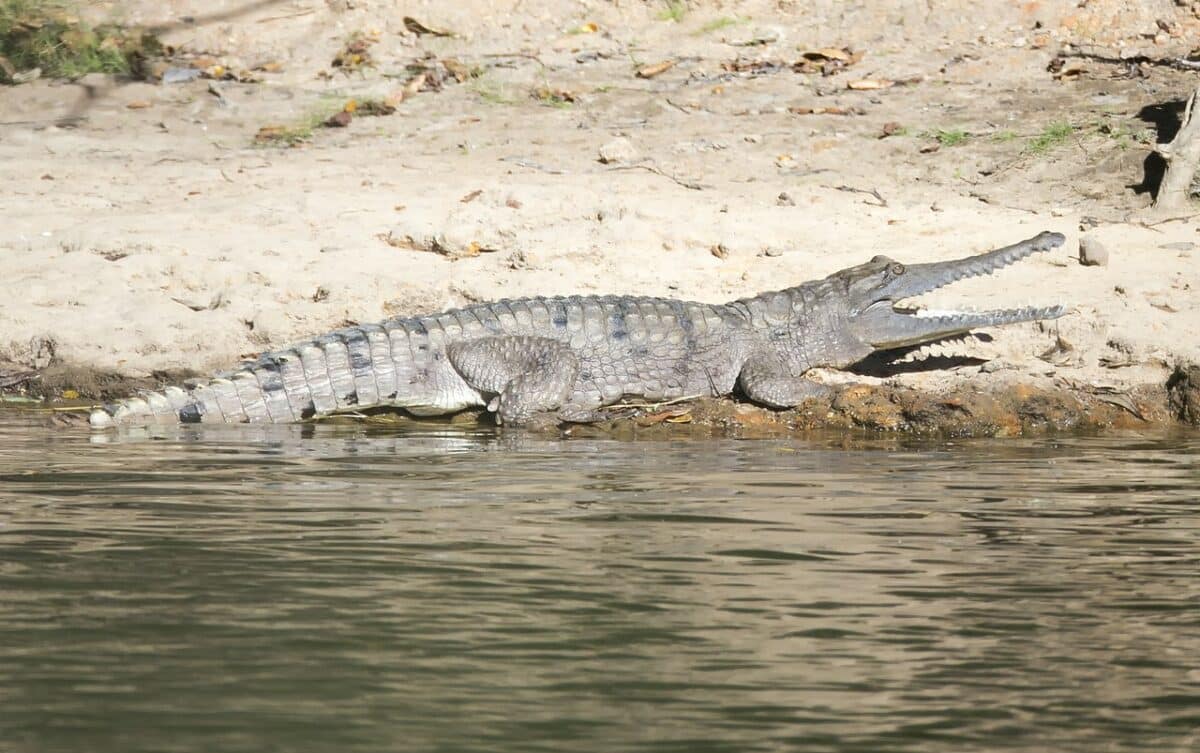
| Aspect | Information |
|---|---|
| Scientific Name | Crocodylus johnstoni |
| Length | Males: Up to 10 to 14 feet (3 to 4.3 meters) |
| Females: Up to 7 to 10 feet (2.1 to 3 meters) | |
| Weight | Males: 330 to 550 pounds (150 to 250 kg) |
| Females: 220 to 330 pounds (100 to 150 kg) | |
| Habitat | Freshwater habitats, including rivers, billabongs, and wetlands. Found in both still and flowing water environments. Prefers relatively calm and shallow waters. |
| Diet | Carnivorous, feeding on fish, crustaceans, frogs, and small reptiles and mammals. They are ambush hunters and rely on their stealth to catch their prey. |
| Behavior | Generally shy and relatively docile compared to some other crocodile species. They are territorial and may defend their nesting sites during the breeding season. |
| Range | Found in northern Australia, including parts of Western Australia, the Northern Territory, and Queensland. They are also found in some regions of Papua New Guinea and Indonesia. |
| Conservation Status | Least Concern (IUCN Red List) |
The freshwater crocodile, referred to as the Australian freshwater crocodile, Johnstone’s crocodile, or simply as ‘freshie,’ is a crocodilian species native to the northern areas of Australia.
Cuban Crocodile
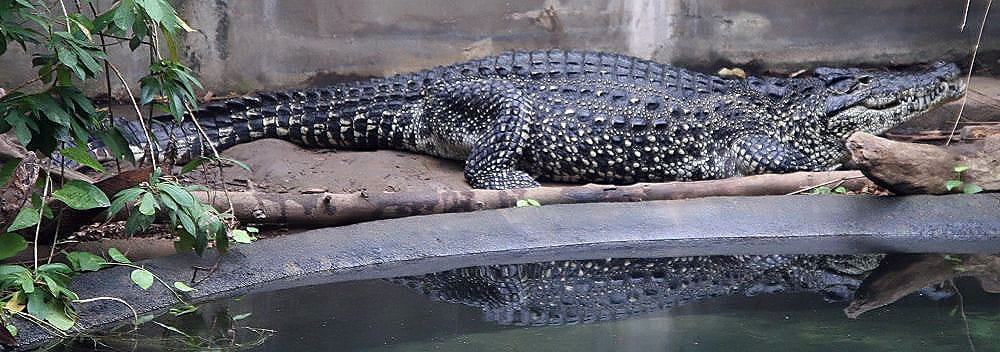
| Aspect | Information |
|---|---|
| Scientific Name | Crocodylus rhombifer |
| Length | Males: Up to 11.5 feet (3.5 meters) |
| Females: Up to 8.2 feet (2.5 meters) | |
| Weight | Males: 440 to 770 pounds (200 to 350 kg) |
| Females: 220 to 550 pounds (100 to 250 kg) | |
| Habitat | Freshwater habitats, including rivers, swamps, and marshes. They prefer slow-moving waters with dense vegetation. |
| Diet | Carnivorous, feeding on fish, crustaceans, small mammals, birds, and reptiles. They are skilled predators with a diverse diet. |
| Behavior | Aggressive and territorial, Cuban crocodiles are known for their striking behavior and agility. They are also excellent climbers and can use overhanging branches to bask in the sun. |
| Range | Found in limited areas of Cuba and the Isla de la Juventud (Isle of Youth). They are primarily restricted to freshwater habitats but can tolerate some saltwater areas. |
| Conservation Status | Critically Endangered (IUCN Red List) |
The Cuban crocodile is a small to medium-sized species found solely in Cuba. Known for its aggressive nature, it’s critically endangered with an estimated population of only about 4,000 due to persistent poaching warning.
West African Slender Snouted Crocodile
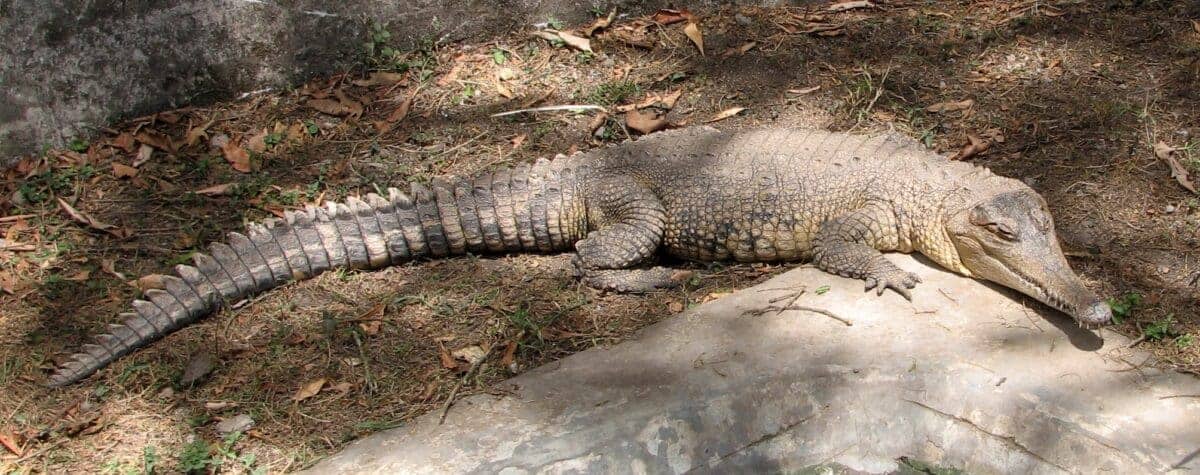
| Aspect | Information |
|---|---|
| Scientific Name | Mecistops cataphractus |
| Length | Males: Up to 11.5 feet (3.5 meters) |
| Females: Up to 9.8 feet (3 meters) | |
| Weight | Males: 400 to 550 pounds (180 to 250 kg) |
| Females: 220 to 330 pounds (100 to 150 kg) | |
| Habitat | Freshwater habitats, including rivers, swamps, and marshes. They prefer slow-moving waters with dense vegetation and are often found in forested regions. |
| Diet | Carnivorous, feeding on fish, crustaceans, frogs, and small vertebrates. They are also known to eat fruits and vegetation occasionally. |
| Behavior | Elusive and secretive, West African slender-snouted crocodiles are not as well-studied as some other crocodile species. They have a slender snout, which helps them catch fish and other agile prey. |
| Range | Found in parts of West Africa, including countries such as Senegal, Gambia, Guinea-Bissau, Guinea, Sierra Leone, Liberia, and Ivory Coast. They have a fragmented distribution and are locally distributed. |
| Conservation Status | Endangered (IUCN Red List) |
The West African slender-snouted crocodile is a critically endangered species of African crocodile. It is one of five species of crocodile in Africa.
About
The crocodilian form is adapted to an amphibious way of life. Its body is elongated, and its long, muscular tail is well suited to rapid swimming. They have evolved to be one of the most resilient predators in existence through their highly developed sense; Crocodiles have acute senses, an evolutionary advantage that makes them successful predators. The eyes, ears and nostrils are located on top of the head, allowing the crocodile to lie low in the water, almost totally submerged and hidden from prey.
Crocodile teeth:
Crocodiles can go through 4,000 teeth over a lifetime. They are able to replace each of their 80 teeth up to 50 times over their lifespan.
Distribution & Habitat
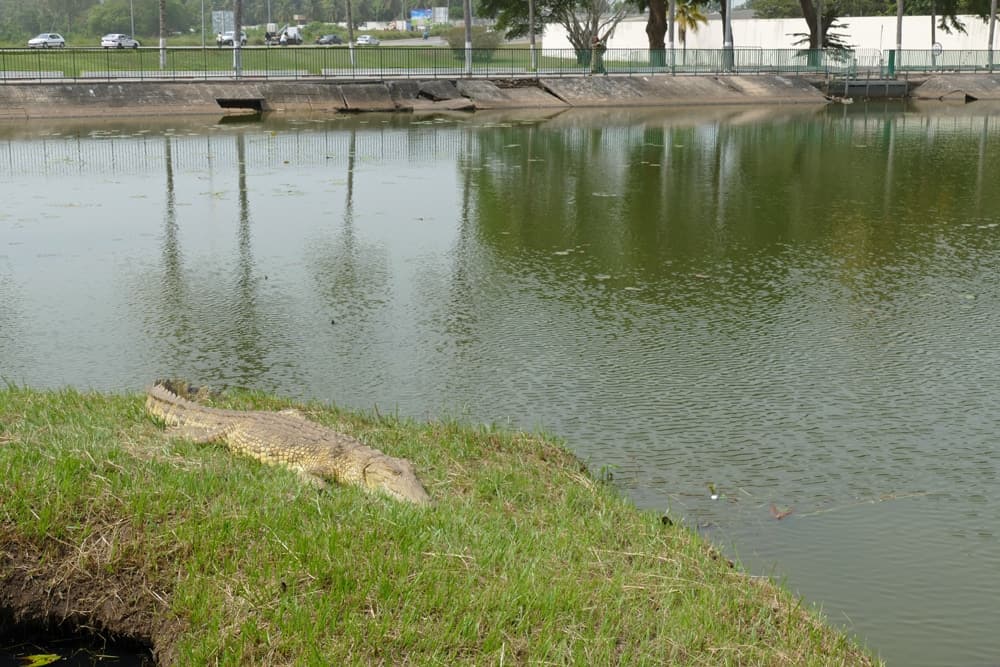
Crocodiles, sizable reptiles, dwell within the tropical regions of the Americas, Australia, Africa, and Asia. They are not naturally found in Europe, making it the sole continent where they do not inhabit.
Crocodiles are inhabitants of swamps, lakes, and rivers, although some species make their way to brackish water or to the sea.
Behavior
Some species of crocodiles are active during the day, while others are nocturnal. They mainly hunt at night, relying on their carnivorous nature and superior senses of hearing and eyesight.
Crocodiles are aggressive ambush predators, patiently waiting for their prey to approach before swiftly attacking.
Diet
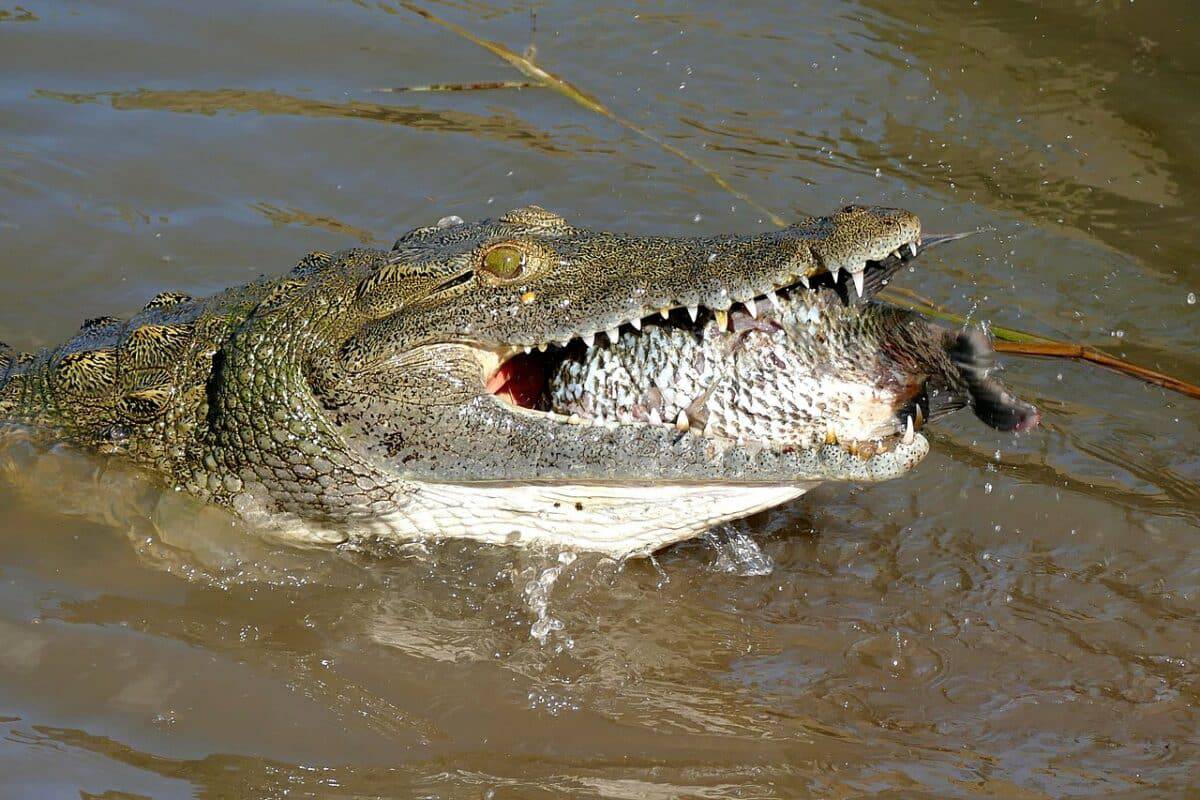
A crocs diet mostly includes other animals, reptiles, birds and fish. Some species like the freshwater crocodile will mostly eat fish, while larger species like the saltwater crocodile or the Nile crocodile, will consume buffalo, zebra, deer and wild boar.
Breeding
The timing of the breeding season differs depending on the crocodile species and their geographical whereabouts. Freshwater crocodiles typically breed in the dry season, which falls around mid-summer in the southern hemisphere and mid-winter in the northern hemisphere. In contrast, saltwater crocodiles tend to breed during the opposing wet season.
All crocodiles lay hard-shelled eggs, which may weigh 50–160 grams
How long do crocodiles live
Crocodiles in captivity are known to have lived up to 70 years. The longevity of crocodiles in the wild is poorly known.
Crocodile Speed
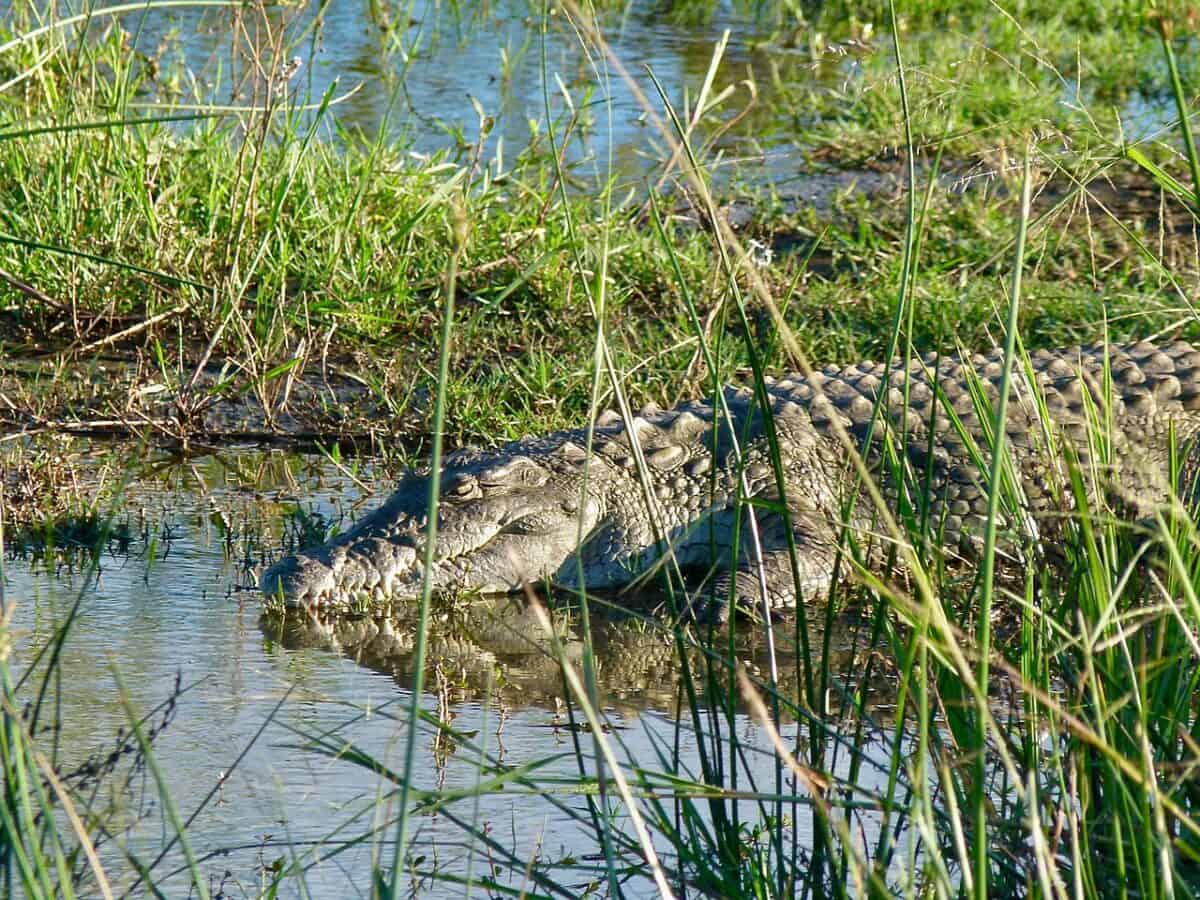
Crocodiles are extremely fast in the water, swimming up to speeds of 35 kilometers per hour (22 mph). The land speed record for a crocodile is 17 km/h (11 mph) measured in a galloping Australian freshwater crocodile.
Communication
Crocodiles vocalize to communicate. The young of some species squeak and grunt, while adult crocs can growl, hiss or roar at each other.
Intelligence
Crocodiles are capable of complex behaviors. They are often curious and show evidence of rapid learning. Captive individuals of some species are known to recognize their keepers and show neither fear nor aggressiveness. They can observe and use patterns of prey behavior, such as when prey come to the river to drink at the same time each day.
Conservation
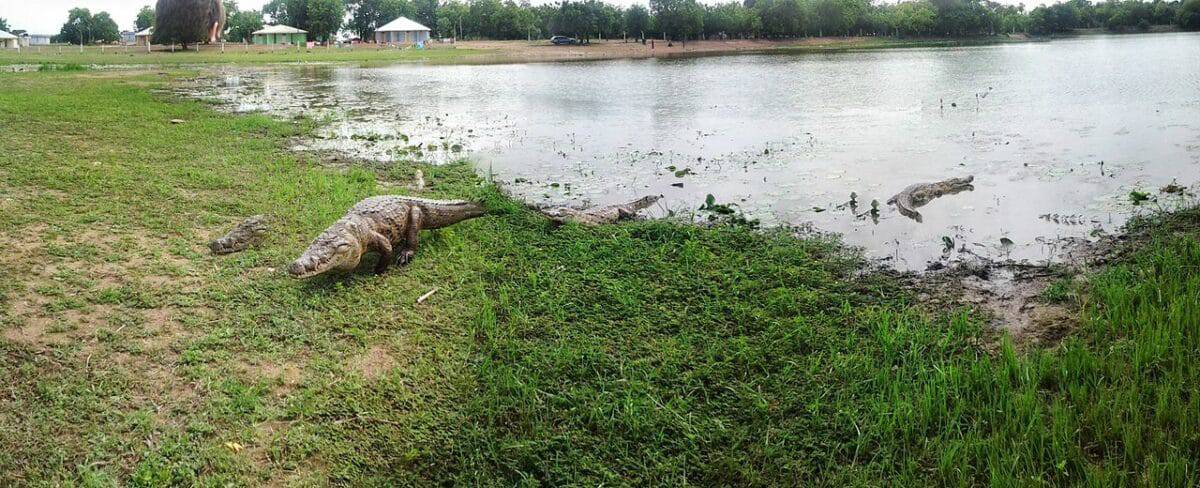
Throughout their range, crocodile populations have declined as human occupation and land use change has reduced their habitat. Many crocodilian species have been greatly depleted by overhunting for their valuable skins—which provide leather for handbags, shoes, belts, and other articles. Sustainable harvesting, regulated trade, and education have become valuable components of crocodilian conservation.
Fun Facts about Crocs
- Around for 200 million years.
- They are members of the order Crocodilia, which also includes alligators, caimans, and gharials.
- Crocs can hold their breath underwater for more than an hour.
- Larger crocodiles can go for over a year without eating a meal.
- Crocodiles have appeared in various forms in religions across the world. Ancient Egypt; Sobek, the crocodile-headed god, and Taweret, the goddess of childbirth and fertility.
- Cannibalism and social exclusion are thought to greatly affect population dynamics and regulate population growth.
The origin of ” crying Crocodile Tears” : “Crying crocodile tears” is a person expressing insincere remorse. It is a saying that goes back to about the 16th century and this belief originates from an ancient story suggesting that crocodiles shed tears either to attract their prey or as a sign of mourning for the victims they consume.
How old are Crocodiles ?
Crocodiles have evolved over 200 million years but the species first appeared 95 million years ago in the Late Cretaceous period. They are the closest living relatives of birds; the two groups are the only known survivors of the Archosauria.
Difference between crocodiles and alligators
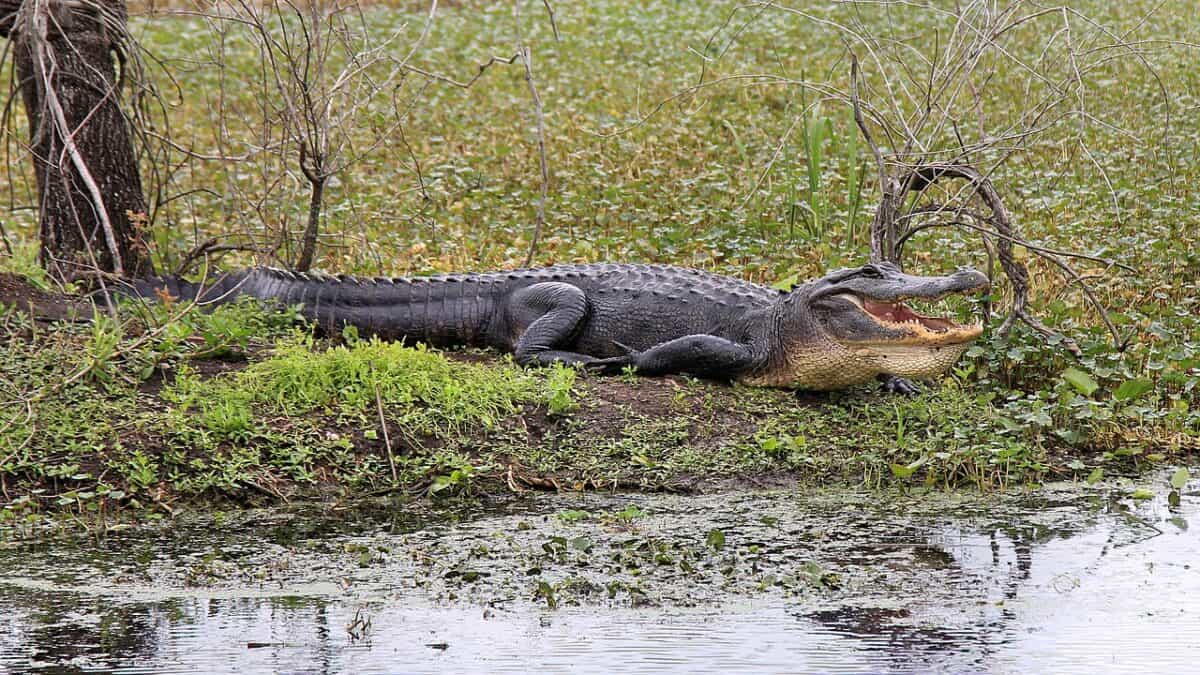
To most people, alligators and crocodiles look similar. While they do share many of the same features, they couldn’t be any more different to a trained professional.
Typically, crocodiles are more aggressive than alligators, which makes crocodiles more dangerous than alligators. Alligators are opportunistic feeders. They do not hunt unless it is necessary. However, that certainly doesn’t mean that you should swim with them. Caution should be exercised at all times near alligators and crocodiles.
Crocodile vs alligator snout
Alligators have a wide, rounded, u-shaped snout, while crocodiles have long, pointed, v-shaped snouts.
Crocodiles are different from alligators in this sense, where both upper and lower jaws of a crocodile are the same size, exposing their teeth as they interlock, creating the look of a toothy grin.
Is it safe to see Crocodiles?
The larger species of crocodiles are very dangerous to humans, mainly because of their ability to strike before the person can react. The saltwater crocodile and Nile crocodile are the most dangerous, killing hundreds of people each year in parts of Southeast Asia and Africa.
Safety tips:
Always keep a watch for crocodiles. They will see you before you see them. Never provoke, harass or interfere with crocodiles, even small ones. Never feed crocodiles — it is illegal and dangerous. even in areas where proactive crocodile management is well-established, ultimate responsibility for your safety lies with you.
Where to see Crocodiles
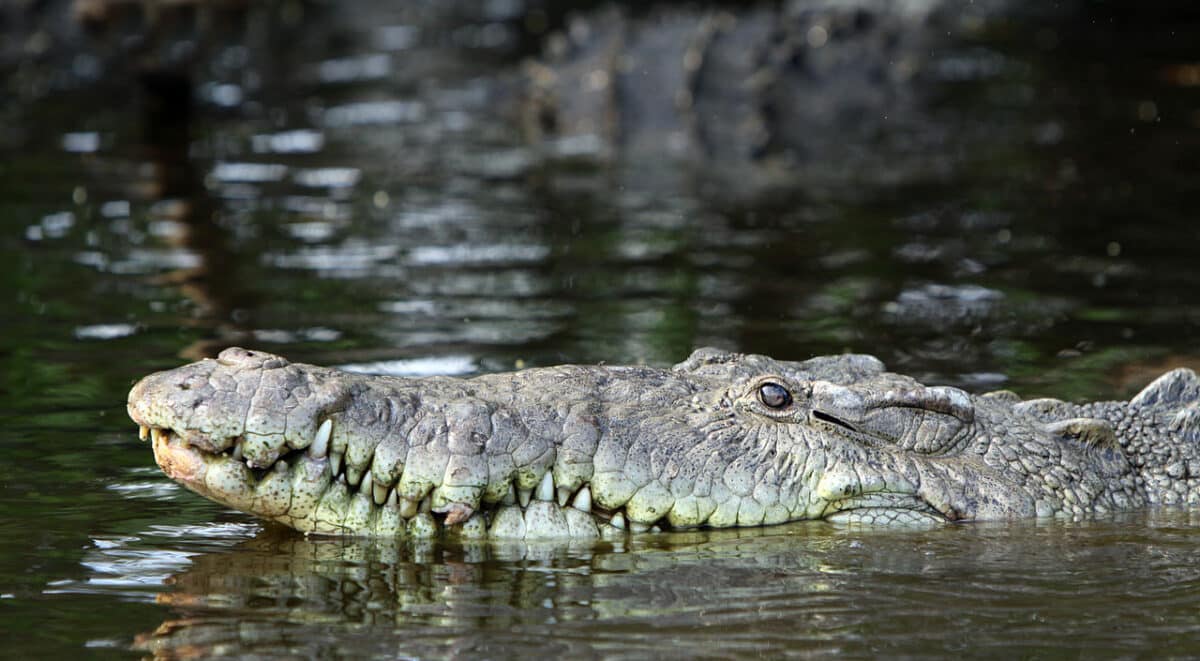
We have featured some of the most common places to encounter crocodiles in the wild around the world.
Where to see Crocodiles in USA
The Everglades harbor more than 200,000 alligators and crocodiles, yet the state of Florida boasts a population of over 1.5 million of these creatures. Predominantly inhabiting the coastal plains of the southeastern United States, these gators reside in various natural and artificial freshwater habitats like lakes, ponds, rivers, and wetlands.
Everglades National Park, Florida
Tour Operators:
Where to see Crocodiles in South Africa
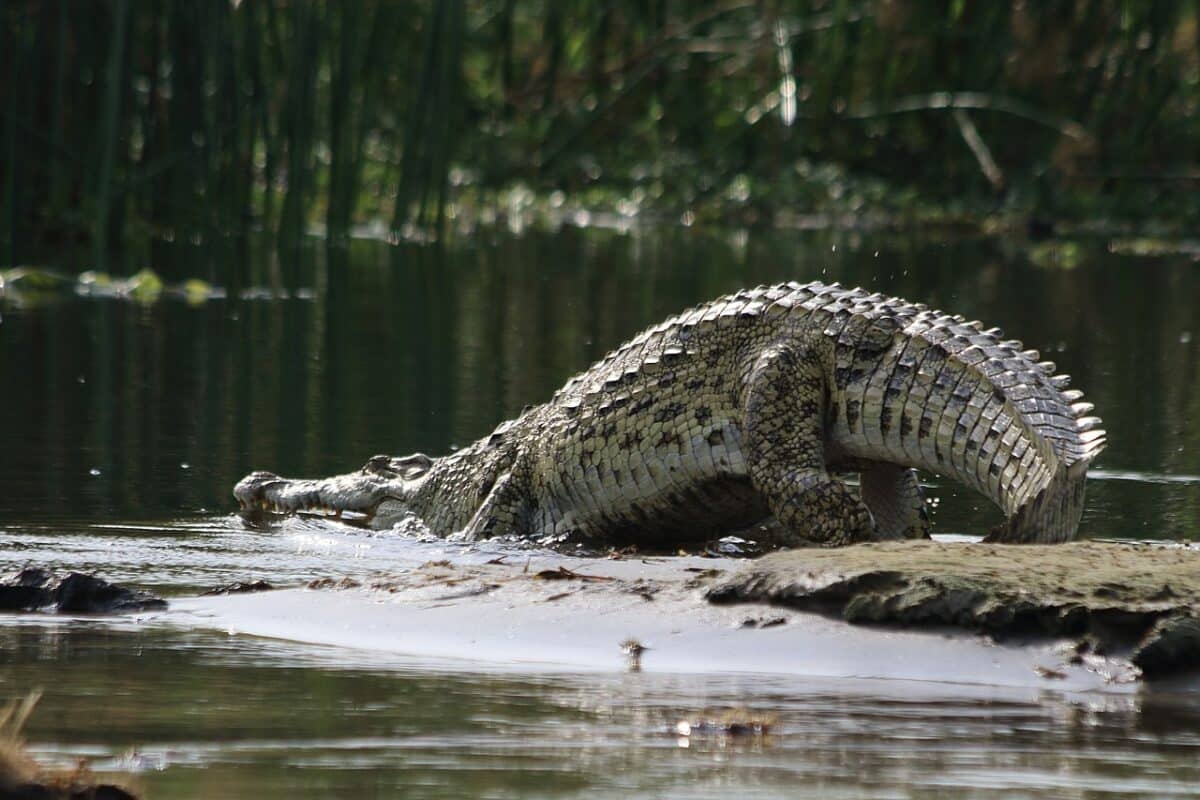
South Africa is home solely to the Nile crocodile (Crocodylus niloticus), known as a formidable predator. A fully grown adult has the capability to hunt down even the largest megafauna species, such as buffalo and wildebeest.
- Kruger National park, Mpumalanga
- St Lucia reserve, KZN
- Ndumo Game Reserve
- Isimangaliso Wetland Park
Tour Operator:
Where to see Crocodiles in Australia
Australia is home to only two species of crocodile, but can boast having the largest; the Saltwater Crocodile. While saltwater crocodiles, also known as ‘salties,’ have the ability to inhabit the sea, they typically favor estuaries in Northern area. During the breeding season, they frequently journey inland.
- Kakadu National park
- Adelaide River, Northern Territory
Tour Operators:
Where to see Crocodiles in Cuba
Endemic to Cuba, the Cuban crocodile is the most terrestrial of all crocodile species, with long and strong legs that distinguish it from its relatives. They were once found across the Caribbean and the Bahamas but hunting reduced the population to a small region of Cuba.
- Tour Operator: Cuba Unbound
Where to see Crocodiles in Sri Lanka
Sri Lanka has two species of crocodiles. One is the Mugger or Marsh crocodile. The other is the Saltwater or Estuarine crocodile. Sri Lanka is home to around 2,500 to 3,500 saltwater crocodiles, more than half of which are found in national parks.
- Wilpattu,
- Yala,
- Bundala National Parks.
Tour Operator: Wildlife Tours Sri Lanka
Where to see Crocodiles in India
three crocodilians species found in India, Mugger crocodile, the Gharial and the Saltwater Crocodile. The Mugger crocodile and the gharial are found throughout the Indian subcontinent. They are known to be very aggressive and ambush their hunters.
They mostly prey on fish, reptiles, birds and mammals. In some villages in India’s western state of Gujarat, locals live in proximity to Mugger crocodiles.
- Indira Gandhi Wildlife Sanctuary and National Park is known as Anamalai Tiger Reserve; notable for largest population of mugger crocodile in India.
- National Chambal Sanctuary, Rajasthan; popular habitat for Gharial Crocodiles
- Katarniaghat Wildlife Sanctuary: Gharial Crocodiles
- Bhitarkanika National Park, Odisha : Saltwater Crocodile population
- Sunderban National Park, West Bengal
Tour Operator: Nature Safari India
Summary on where to see crocodiles
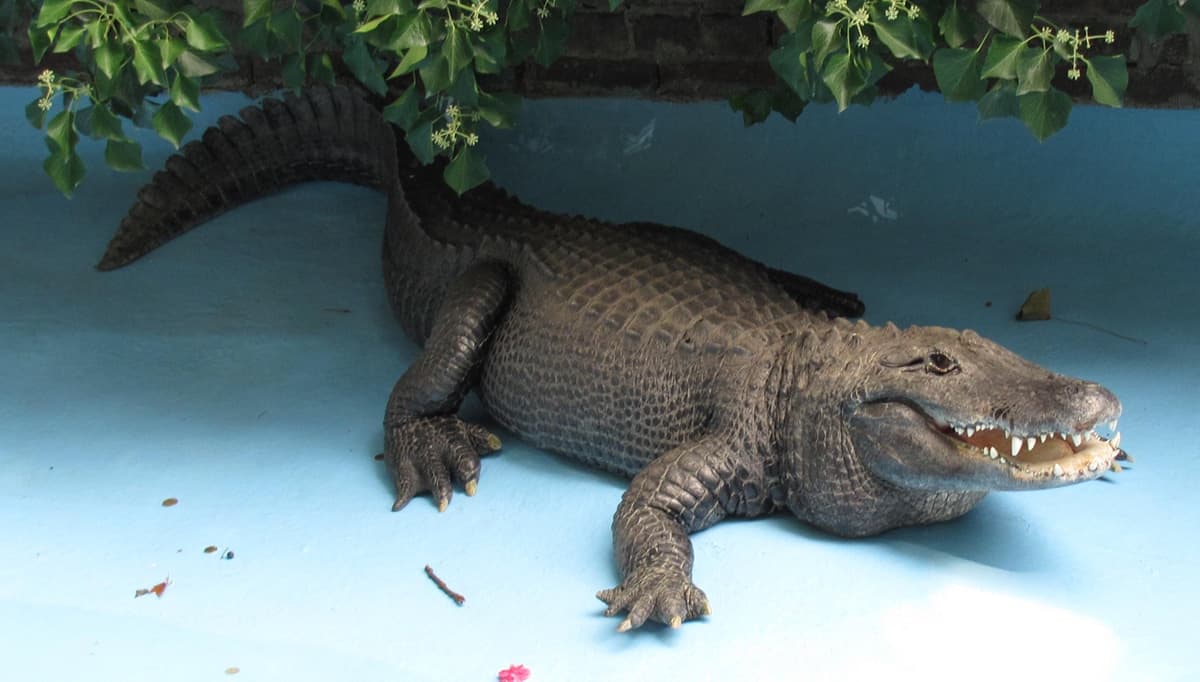
These prehistoric reptiles are a privilege to witness in the wild. Importantly, safety is foremost the biggest concern, and it is up to the tour guide and tourist to be as informed of protocols as possible.
Many thrilling and educational tours exist to keep viewers amazed at a safe distance. Likewise, for their relatives the alligators, there are many tours offered.
Interested in a world of reptiles? Take a look at our blogs featuring all of our reptiles and where to encounter non venomous snakes; the boa constrictors! Also Check out Komodo Dragon vs Goat.
In a while crocodile!
Frequently Asked Questions (FAQs)
Crocodiles are most commonly found in swamps, lakes, rivers, and coastal areas in tropical and subtropical regions. Some of the best places to see crocodiles in the wild include national parks and reserves in Africa, Asia, the Americas, and Australia. Examples of such places are the Everglades National Park in Florida, Kruger National Park in South Africa, Kakadu National Park in Australia, and various other wildlife sanctuaries around the world.
Crocodiles are ectothermic (cold-blooded) reptiles, and their activity levels depend on temperature and environmental conditions. Generally, they are more active during the warmer parts of the day, such as early morning and late afternoon. They tend to bask in the sun to regulate their body temperature and become more active during these times for hunting and other activities.
Crocodiles are incredibly fast swimmers and can reach speeds of up to 35 kilometers per hour in short bursts. On land, they are also surprisingly agile and can cover short distances quickly. It is highly unlikely that a human can outrun a crocodile, especially over any significant distance. Therefore, it is essential to maintain a safe distance from crocodiles and avoid putting yourself in a position where you would need to outrun them.
When observing crocodiles, it’s crucial to maintain a safe distance from the water’s edge, follow local guidelines, and avoid provoking or disturbing these reptiles to prevent potential encounters or attacks.
Different species of crocodiles exhibit distinct habitat preferences based on their geographical locations and ecological needs. For example, Nile crocodiles favor freshwater habitats like rivers and lakes in Sub-Saharan Africa, while saltwater crocodiles thrive in brackish and freshwater environments in Southeast Asia and Northern Australia. These variations in habitats reflect the specific environmental conditions each species requires for nesting, feeding, and survival.
- Largest Gorilla Ever Recorded (860 Pounds) - April 8, 2024
- Sloth vs Young Harpy Eagle - April 8, 2024
- Watch: The Intense Clash of a Komodo Dragon Over an Innocent Goat (on Video) - March 21, 2024

